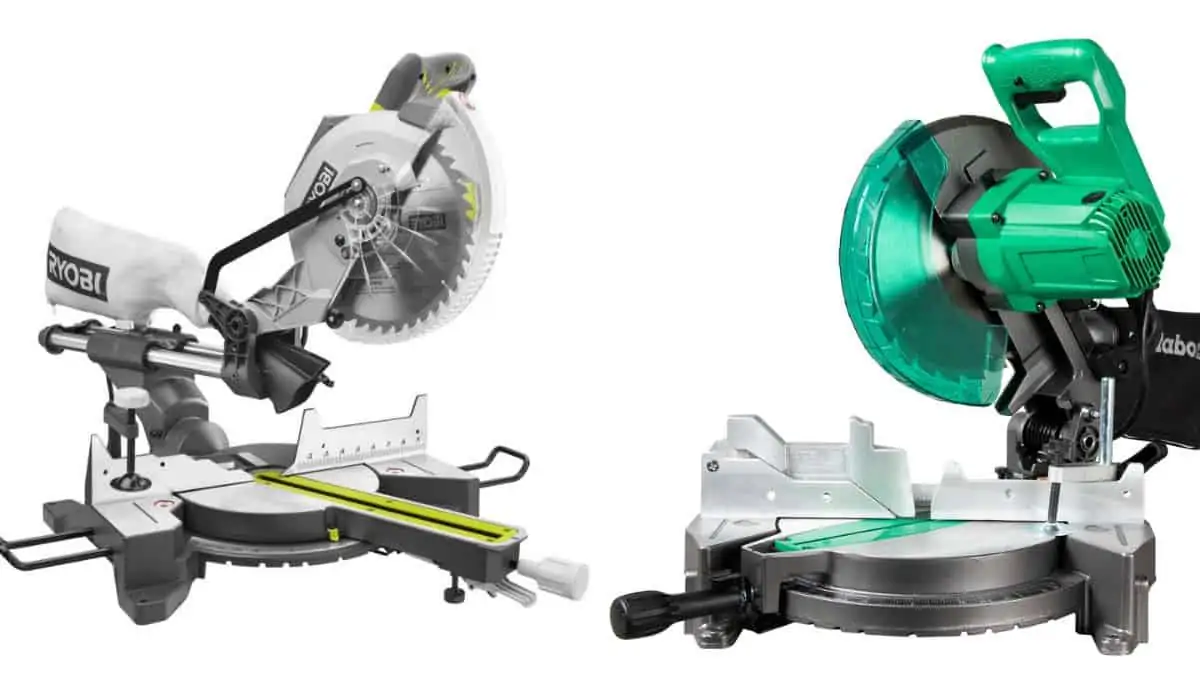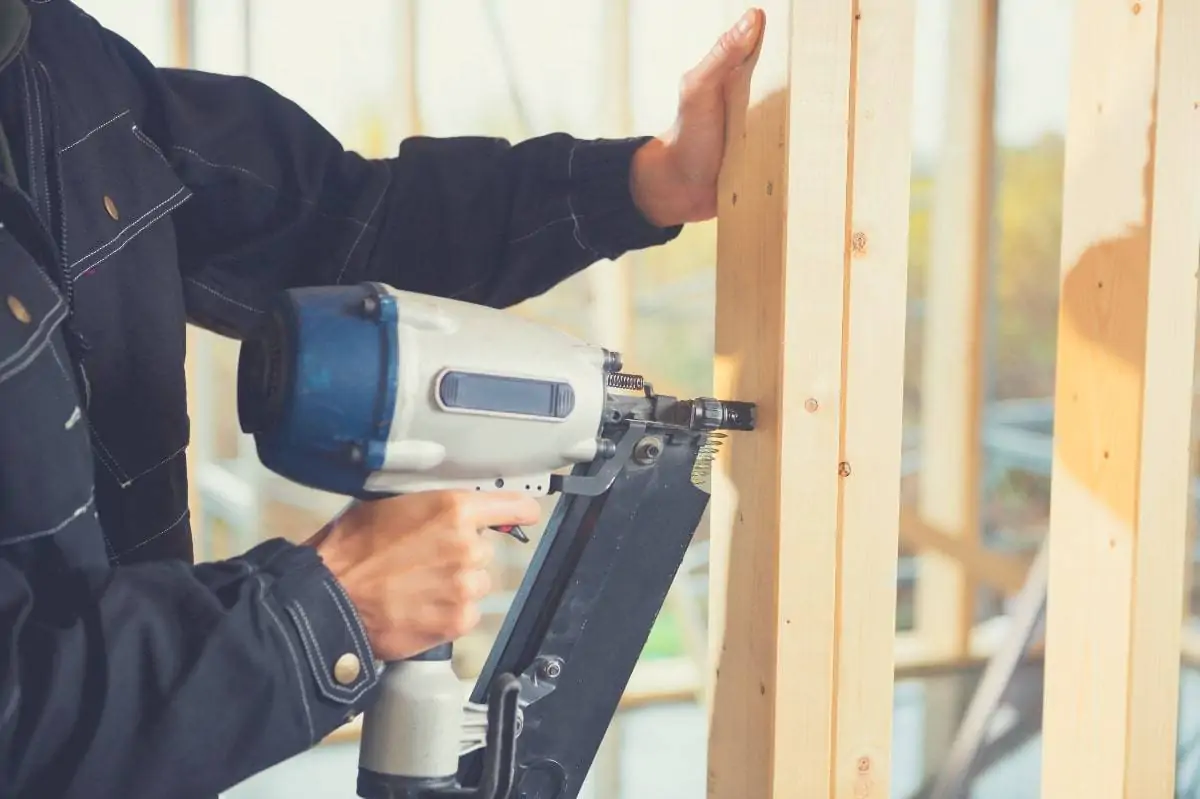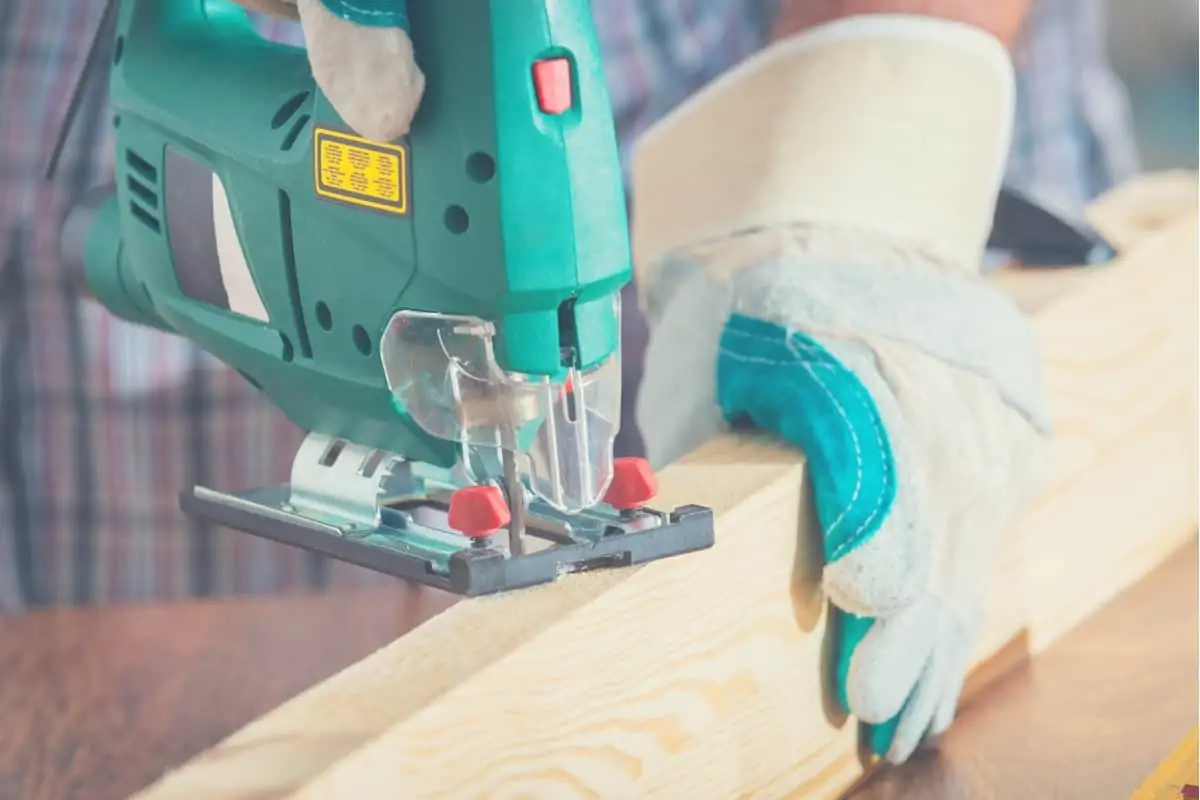In this article, you’ll learn all about the sliding vs. non-sliding miter saw problem. Both saws could potentially be excellent additions to your collection, but your situation may dictate for one more than the other.
Have you decided that you’re ready to add a miter saw to your collection, but you’re unsure what features you want? The sliding feature that some miter saws possess is one of the most useful, but these sliding saws come with their own set of challenges, too.
Miter Saws: Why Do You Need One?
A miter saw is a tool that’s excellent for making exact cuts in wood. In particular, miter saws are great for angled cuts, bevel cuts, and other straight cuts that would be difficult with a circular saw or jigsaw. While sliding and non-sliding miter saws have a few different features, keep in mind that you can do virtually the same things with both types of saws.
On the other hand, household miter saws are not designed to cut vast pieces of lumber. They’re also not incredibly portable, though some miter saws are more portable than others. Instead, miter saws are most useful for building small structures like sheds, playhouses, shelves, or anything else that needs lots of short, precise cuts.
However, if you’re low on cash, you don’t actually need a miter saw. You can make the same cuts with a table saw, circular saw, jigsaw, or virtually any other type of saw. You can even buy a hand saw for miter cuts if you need to. The benefit of the miter saw is its convenience and speed; nothing else will give you angle cuts at the same rate.
10-inch or 12-inch?
You may or may not know this already, but miter saws usually come in 10-inch and 12-inch sizes. The only functional difference between the two is the size of the lumber they can cut. The bigger the blade, the more it can handle.
However, keep in mind that saws with larger blades will cost more to maintain in the long run. Larger saw blades mean a higher price to pay for those blades, and if one saw blade size is more in-demand than the other, that can make them more difficult to find in stores, too.
As a rule of thumb, all sliding miter saws will be able to cut more than non-sliding miter saws, but from there, the saw blade size reigns supreme.
What Is a Non-Sliding Miter Saw?
A non-sliding miter saw, as you might expect from the name, is a miter saw that can’t slide back and forth. A non-sliding miter saw can cut a set width of wood – for example, if you have a non-sliding miter saw with a 12” blade, the maximum width of lumber you can cut is about 8”. On the other hand, with a 10” blade, the full width you can cut is approximately 6”. A sliding miter saw can cut up to double that.
Non-Sliding Miter Saw Strengths
A non-sliding miter saw is great for everyday jobs for the average homeowner. Not only are they usually cheaper than a similar sliding model, but it tends to be lighter and more portable, too. But where the non-sliding miter saw truly shines is in the angles it can cut.
While designs of miter saws tend to vary slightly depending on the manufacturer, the fact of the matter is that sliding miter saws just can’t pivot as much. Most miter saws can be adjusted to accommodate certain angles, but because sliding miter saws need to accommodate a larger area for the blade to cut, they can’t pivot as far in either direction.
You can cut whatever angle you want on either a sliding or non-sliding miter saw if you’re a bit creative about it. However, when it comes to sliding vs. non-sliding miter saws, non-sliding miter saws are much easier to work with. These saws are designed to accommodate nonstandard, extreme angles with that pivoting function natively.
For example, if you wanted to build a structure that uses small angles – like an art piece, for example – you would want the cutting freedom that comes with a non-sliding miter saw.
Non-Sliding Miter Saw Weaknesses
However, since most home builders won’t need to make these tiny, extreme angle cuts, that puts the non-sliding miter at a disadvantage. Non-sliding miter saws can’t handle broad cuts, and they aren’t quite as efficient at cutting wood as sliding miter saws are.
While sliding cuts usually glide through the wood from front to back, non-sliding miter saws cut through from top to bottom. While you likely wouldn’t be able to tell the difference between both cuts if you looked at them side-by-side, the blade on a non-sliding miter saw can often wear out faster because it encounters more resistance from the wood.
Pros
- Excellent for precise and extreme angle cuts
- Less expensive than sliding miter saws
- Lighter and smaller than sliding miter saws
- Enough for the hobby builder or home improver
Cons
- Can cut a maximum of 8” wide lumber
- Saw blade tends to wear out faster (and even warp more) than sliding miter saw blades
- If you don’t need extreme angle cuts, the non-sliding miter saw has little benefit for you
What Is a Sliding Miter Saw?
A sliding miter saw, as you might have guessed, is designed to move both up and down as well as back and forth while cutting lumber. Because of this, it can handle broader cuts of wood – a 12” blade can often take lumber up to 16” wide. However, the trade-off for this is a more expensive, heavier saw, and one that can’t cut unusual angles as well.
If you’re a homeowner, for example, that typically only needs to cut 2×4 or 2×6 pieces of lumber, you don’t need a sliding miter saw, as those sizes are well within the capabilities of a non-sliding model. However, if you plan to build more complicated things that require non-standard lumber sizes, or if you’re a woodworking professional, you may want to have the sliding miter saw on hand instead.
Sliding Miter Saw Strengths
Imagine, for example, that you’re creating wooden furniture or wood furnishings for your home, like a shelving unit or a floating live-edge shelf. If you only had a non-sliding miter saw, you would need to use several narrow wood pieces to make your shelves. With a sliding miter saw, though, you could cut one piece of wide limber to the size you needed quickly.
Additionally, don’t forget that, because of their long, extendable stabilization arms, sliding miter saws are better for cutting long pieces of lumber, too. For example, if you were building a custom wood swing set for your kids, you would need to work with very long pieces of limber that a non-sliding miter saw might not be able to balance correctly.
Sliding Miter Saw Weaknesses
As I said above, though, sliding miter saws’ main limitations are size, price, and weight. They’re more challenging to transport than non-sliding miter saws. For example, contractors and builders moving to different job sides and mainly cutting standard-sized lumber will probably be happier with a non-sliding miter saw.
Additionally, a home builder might balk at the higher price of a sliding miter saw if they’re expecting to pay the same amount as they would for a non-sliding model. However, do keep in mind that you might end up saving a bit of money on saw blades in the long run, as sliding miter saw blades tend to keep their integrity for longer.
Pros
- Cuts wide, tall, and long lumber better than a non-sliding miter saw
- Saw blade lasts longer than a non-sliding miter saw
- Better for those who plan to work with many different lumber sizes
Cons
- Larger, more expensive, and heavier than a non-sliding miter saw
- Not as good for unique angle cuts
- More challenging to transport than a non-sliding miter saw
Compound Miter Saws
Compound miter saws are just like regular sliding and non-sliding miter saws with the addition of bevel adjustment. If you needs something capable of achieving more than simple angled cuts then this is the tool for you.
By adjusting both the miter and bevel angles you can make compound angled cuts. This comes in useful when you need to cut complex trim like crown moulding.
So when it comes to compound miter saw, which is best? Sliding vs non-sliding miter saw? Pretty much everything above still applies for sliding and non-sliding compound miter saws.
Summing It up: Sliding vs Non-Sliding Miter Saw – Which Is Best for Me?
In the end, regardless of whether you buy a sliding or non-sliding miter saw, you’ll have a device that’s completely capable of helping you get the job done. While each saw is suitable for a different person, when you pare it down, they both do the same thing: help you make efficient, precise angle cuts on lumber quickly and easily.
What’s your opinion on the question of the sliding vs non-sliding miter saw? Have you owned one or both of these tools? If so, leave a comment below about whether you could live without one, which one you use more, or which you would buy if you were given a complete do-over.



